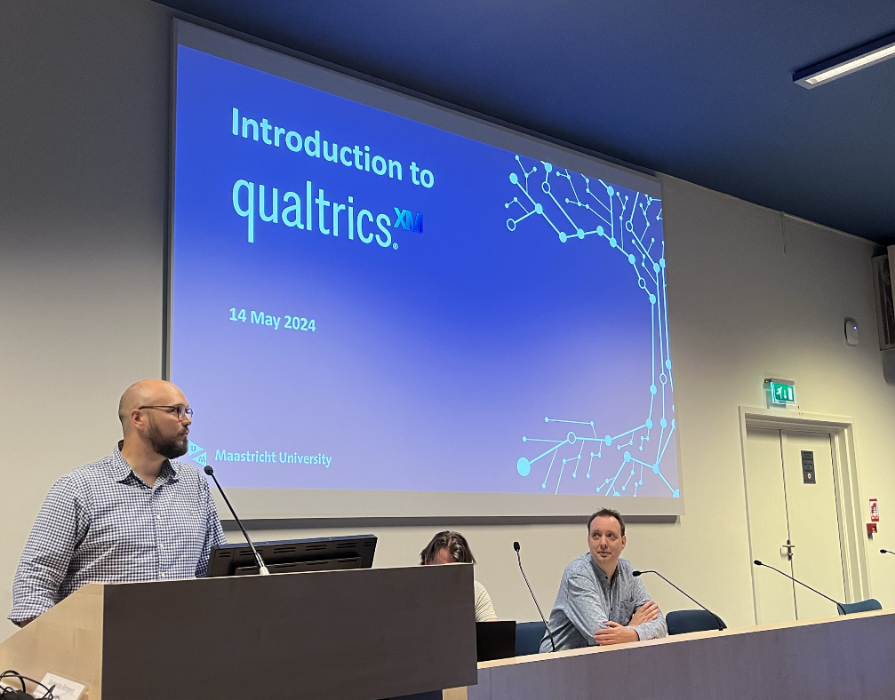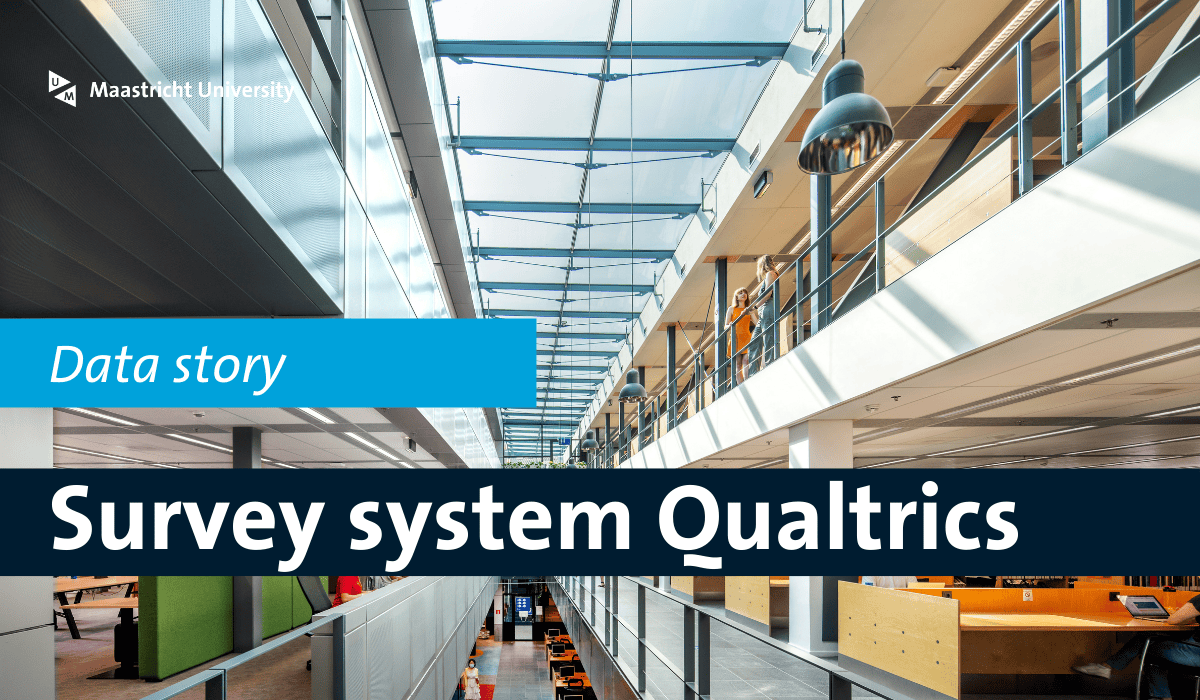What is Qualtrics and how is it used at UM?
Qualtrics is an online survey system available to UM staff and students through a centrally managed license. The university has supported this effort since 2020 by facilitating Qualtrics as institutional option for collecting survey data.
The system has an accessible interface, which is useful for the average use case. At the same time, it supports more specialised features, for example: question randomisation, branching logic, embedded data, or anonymisation settings that help with privacy requirements. Users can design their surveys using pre-configured templates or build their own. Survey responses can be exported in various formats for analysis.
There are two “Qualtrics environments” available at the university: the academic environment meant for research and education, and the non-academic environment, which is intended to be used for operations, such as administrative feedback, service monitoring, etc.

© Maastricht University
Most activity takes place in the academic environment, which has seen growth over recent years. In 2024, the academic environment collected 759,228 responses, averaging more than 63,000 per month. Also in 2024, 3,244 new academic users joined the platform. For comparison, only 160 new users registered in 2020. These numbers suggest that the platform has become part of research and teaching practice across faculties.

© Maastricht University
Training and support
Naturally, as usage increases, so does the need for guidance. Designing a survey and managing response data is not always straightforward, especially when privacy or technical issues come into play. One example of the challenge can be seen at the Faculty of Psychology and Neuroscience (FPN).
When Dr. Francesco Gentile (Assistant Professor – FPN) introduced an assignment for Master students using Qualtrics, he expected students to engage with the tool independently. Instead, he received several questions like: “How do I randomise answer choices?”, “Why are my survey links broken?”, “Can I track responses without violating privacy rules?”, etc. Francesco was spending more time troubleshooting than teaching.
In response, Francesco collaborated with the Data Collection and Storage team at the University Library to set up a hands-on Qualtrics training session. The training addressed basic elements of survey construction, explained how to apply anonymisation, and offered tips for more efficient use of the platform, like usage of templates or reporting.

© Maastricht University
From a teaching perspective, the volume of technical support questions like Francesco’s case decreased. Based on this, the training format was adopted in other instances, like in the Faculty of Arts and Social Sciences (FASoS), and it is offered at FPN for a second run.
Recommendations and resources
To support responsible data management, users are encouraged to export their survey data after each project phase, as Qualtrics is not intended for long-term storage. Anonymisation options, such as disabling IP collection, and pseudonymisation, can be applied when needed.
University staff and students are recommended to use the institutional Qualtrics environment when collecting personal data. External survey tools often lack a data processing agreement with the university, which may lead to compliance risks. For an overview of approved tools, consult the Data Processing and Storage Finder, or contact the Data Steward of your faculty or unit.
Guidance and training are available through the UM Library Qualtrics Guide and the online Qualtrics Basecamp, additionally there is an UMployee Qualtrics group (only accessible to UM employees), where staff can have updates, posts on features, and training invitations. Also, an online module on Privacy in Research is available online offered by SURF.
In conclusion, UM Qualtrics is now part of the regular toolkit for conducting surveys at Maastricht University. Its use has expanded alongside the development of institutional policies on data handling and responsible research practices. For further research data management guidance, please refer to the UM Research Data Management Code of Conduct.
More information
Should you require more detailed information or assistance, visit the UM Qualtrics support team page or visit the Qualtrics XM Support to consult detailed manuals.
Author: Fabrizio di Stefano (Product Owner, Data Collection and Storage, Maastricht University Library)


0 Comments